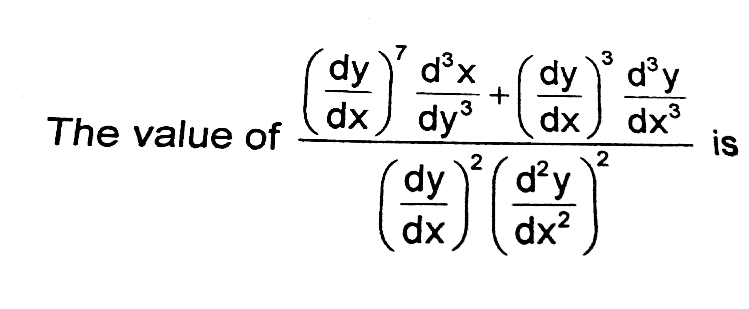
Question and Answers Forum
AllQuestion and Answers: Page 1668




Pg 1663 Pg 1664 Pg 1665 Pg 1666 Pg 1667 Pg 1668 Pg 1669 Pg 1670 Pg 1671 Pg 1672
|
Question and Answers Forum |
AllQuestion and Answers: Page 1668 |
| calculate ∫_0 ^1 ((ln(t))/((1+t)^2 ))dt |
| let f(x,y) = ((xy)/(x+y)) 1) find D_f 2)calcule x(∂f/∂x)(x,y) +y (∂f/∂y)(x,y) interms of f(x,y) |
| let f(x,y)=ln((√(x^2 +y^2 ))) calculate (∂^2 f/∂x^2 )(x,y)+(∂^2 f/∂y^2 ) |
| let f(x)= arctan((x/y)) calculate (∂^2 f/∂x^2 )(x,y) , (∂^2 f/∂y^2 )(x,y), (∂^2 f/(∂x∂y))(x,y) (∂^2 f/(∂y∂x))(x,y) |
| let f(x,y) =(x^2 +y^2 )sin{ (1/(√(x^2 +y^2 )))} if(x,y)=(0,0) and f(0,0)=0 prove that f is differenciable at all point of R^2 2) prove that (∂f/∂x) and (∂f/∂y) are not differdnciable at (0,0) |
| let g(x,y) = ((1+x+y)/(x^2 −y^2 )) is g have a limit at (0,0)? |
| find lim_((x,y)→(0,0)) ((1−cos((√(xy))))/y) |
| calculate (∂f/∂x) and (∂f/∂y) in this cases 1) f(x,y)= e^(−x) sin(2y +1) 2)f(x,y) =(x^2 +y^2 )e^(−xy) 3)f(x,y) = (x/(x^2 +y^2 )) |
| let A(t) = ∫_(−∞) ^(+∞) ((sin(xt))/(( x +1+i)^2 )) dx with t from R 2) calculate A(t) 2) extract Re(A(t)) and Im(A(t)) 3) find the value of ∫_(−∞) ^(+∞) ((cos(3x))/((x+1+i)^2 ))dx |
| let give I = ∫_0 ^∞ (dx/((x^2 +i)^2 )) 1) extract Re(I) and Im(I) 2) find the value of I 3) calculate Re(I) and Im(I) . |
| Find the middle term in the expansion of (x^ + (3/x))^9 |

|
| Q. If x≠y≠z and determinant ((x,x^3 ,(x^4 −1)),(y,y^3 ,(y^4 −1)),((z ),z^3 ,(z^4 −1)))=0 Prove that xyz(xy+yz+zx)=(x+y+z) please help. |
| (((x+yi−2)^2 )/(x−yi+1)) |

|
| [2^x −^(+ 3) 1 4^(2y+x) x6]=[3^(0−7) 2x] |
| a+b=10.........(i) ab+c=0..........(ii) ac+d=6..........(iii) ad=−1...........(iv) (a,b,c,d)=? Note: This problem is related to solve the equation (t^4 +10t+6t−1=0) of Q#35844 |
| ∫sin^8 xdx ∫sin^6 xdx |
| x^4 +10x^3 +6x−1 =^(?) (x^2 +(((√5)−1)/2))(x^2 +10x−(((√5)+1)/2)) |
| 3(√(200×1080)) |
| 3(√(433^ )) |

|
| {Δ1 3 6 / ×<⌈+2/ 47 |
| If f:R→R is a function such that ∣ f(x) − f(y)∣ ≤ ∣ sin x − sin y ∣∀x,y∈R, Then f(x) is (1) Bijective (2) many−one (3) periodic (4) non−periodic |
| convert 0.26999999...into fraction (a/b) where a≠0 |

|
Pg 1663 Pg 1664 Pg 1665 Pg 1666 Pg 1667 Pg 1668 Pg 1669 Pg 1670 Pg 1671 Pg 1672 |